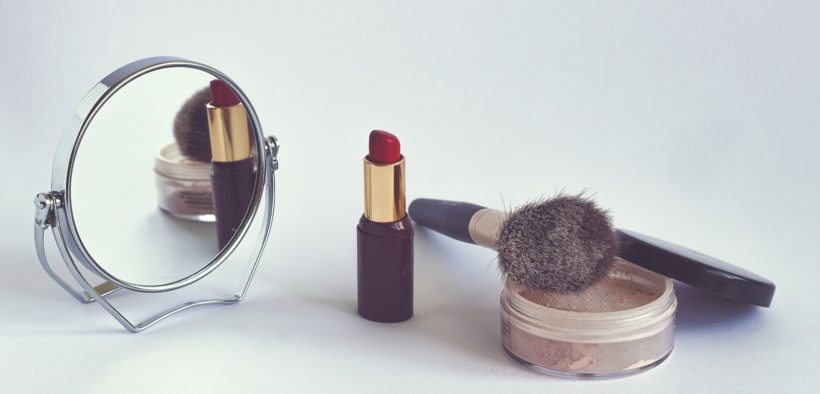बालों के कॉस्मेटिक और हर्बल रंगों से होता है त्वचारोग: एम्स

अखिल भारतीय आयुर्विज्ञान संस्थान (एम्स) के चिकित्सकों के एक समूह द्वारा किए गए एक अध्ययन में पाया गया कि दिल्ली वासियों को होने वाली एलर्जी का एक सामान्य कारण बालों के हर्बल रंग और गोरी करने वाली क्रीम है।
निजी देखभाल वाले बहुत से उत्पादों समेत सौंदर्य प्रसाधनों में समय और भौगोलिक क्षेत्र के अनुसार अलग-अलग तत्व होते हैं। एम्स के अध्ययन में कहा गया है कि सौंदर्य प्रसाधन त्वचा रोग होने का एक सबसे सामान्य कारण हैं। लगातार इस्तेमाल की वजह से ये पुरुषों की तुलना में महिलाओं को ज़्यादा प्रभावित करते हैं।
एम्स के चिकित्सकों ने मीडिया को बताया कि लिपस्टिक, त्वचा को साफ़ करने वाले उत्पाद, त्वचा गोरी करने वाली क्रीम, कंडीशनर और मेकअप उत्पादों में परिरक्षक के तौर पर लगातार ऑक्सीकरणरोधी का इस्तेमाल किया जाता है। ये ऑक्सीकरणरोधी खाद्य पदार्थों में पाए गए ऑक्सीकरणरोधी से अलग होते हैं और हानिकारक हैं।
अधिकतर हर्बल हेयर डाई में पीपीडी (p-phenylenediamine) होना चिंता की बात है क्योंकि इससे त्वचारोग होते हैं। अध्ययन के अनुसार सौंदर्यप्रसाधनों में ACD (allergic contact dermatitis) के अतिरिक्त एशियाई लोगों में रंजित सौंदर्यप्रसाधन त्वचारोग अधिक देखा गया है जिसे पिगमैंटिड कॉस्मेटिक डर्मटाइटिस (PCD) कहा जाता है।
एशिया में त्वचा की रंगत को हल्का करने वाले उत्पादों का ख़ूब इस्तेमाल होता है। इन्हें आसानी से कोई भी ख़रीद सकता है लेकिन इन उत्पादों में मिले हुए तत्वों की जानकारी कभी-कभार ही मिल पाती है।
दक्षिण भारत में कुमकुम से तैयार होने वाले सौंदर्य प्रसाधनों के अध्ययन से पता चला कि 35 से ज़्यादा मामलों में PCD और 11 से ज़्यादा मामलों में एसीडी पाया गया।
शोधकर्ताओं ने युरोप और अमरीका में किए गए सात अध्ययनों के आँकड़े भी देखे जिन में आम लोगों और पैच टैस्ट किए गए 30,207 मरीज़ों को शामिल किया गया था। इस अध्ययन में सौंदर्य प्रसाधनों में 9.8 प्रतिशत एसीडी पाया गया।
एम्स, ऋषिकेश की त्वचारोग विशेषज्ञ रीति भाटिया ने कहा कि ये खेद जनक है कि भारत में अभी भी साँवले या काले रंग को बुरा माना जाता है। इस वजह से त्वचा का रंग निखारने वाले उत्पादों का ख़ूब इस्तेमाल होता है।
ये इस तथ्य से पता चलता है कि बालों को रंगने वाले उत्पादों के बाद त्वचा की रंगत निखारने वाले उत्पादों का ही दूसरे नंबर पर सबसे अधिक इस्तेमाल हुआ है।
अध्ययन के अनुसार त्वचा की रंगत निखारने वाली क्रीम में सबसे अधिक thimerosal फिर cetrimonium और gallate mix जैसे एलर्जी कारक तत्व पाए गए।
बालों के बहुत से हर्बल रंगों में उनका प्रभाव बढ़ाने के लिए पीपीडी मिलाया जाता है लेकिन वे उत्पाद के लेबल के ऊपर पीपीडी तत्व का उल्लेख नहीं करते हैं।
एम्स में त्वचारोग विभाग के प्रमुख और प्रोफ़ेसर डॉ. वी.के. शर्मा ने द हेल्थ को बताया कि औषधि और सौंदर्य प्रसाधन एक्ट 1940 के अंतर्गत नियमों और स्पष्ट दिशानिर्देशों के ना होने की वजह से सौंदर्य उत्पाद और हर्बल उत्पाद निर्माता अपने उत्पादों के तत्वों के बारे में खुलकर नहीं बताते। हम सरकार को लिखेंगे और अनुरोध करेंगे कि सौंदर्य उद्योग में शामिल पक्षों को और अधिक ज़िम्मेदार बनाने के लिए कड़े नियम बनाए जाएँ। हम भी इन हिस्सेदारों के साथ बैठक करके ये समस्याएँ बताने वाले हैं।
त्वचारोग के सबसे सामान्य लक्षण:
- जलन और ख़ारिश
- चेहरे और गर्दन की त्वचा धीरे-धीरे भूरी और फिर अधिक बेजान हो जाती है।
अध्ययन के अहम बिंदु:
- 106 मरीज़ों पर अध्ययन किया गया।
- 77 मामलों में (72.6 प्रतिशत) पैच टेस्ट सकारात्मक पाया गया।
- पीसीडी के मामलों में अधिकतर Cetrimonium, gallate mix, thiomerosal और त्वचा की रंगत निखारने वाली क्रीम कारण रही है।
- सौंदर्य प्रसाधनों में एसीडी में P-phenylenediamine (PPD) अधिक पाया गया।

















